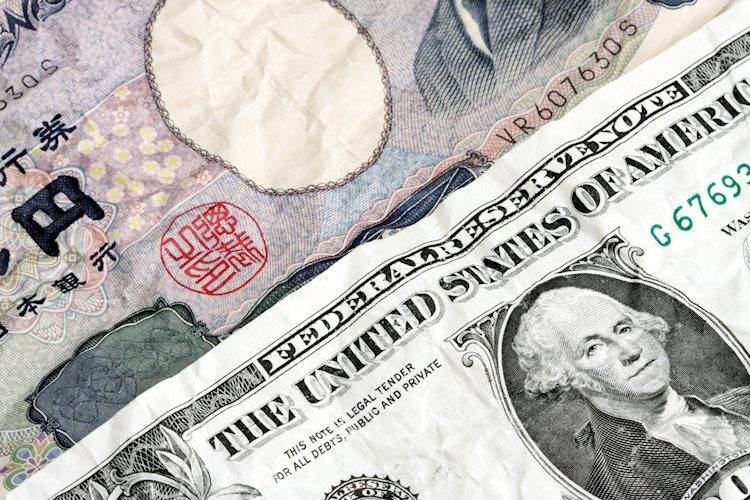Forex Today: Markets remain focused on geopolitics to start the week

Politics tamfitronics
Here is what you need to know on Monday, August 12:
Investors adopt a cautious stance at the beginning of the week as they keep a close eye on developments surrounding the Iran-Israel conflict. The economic calendar will not feature any high-tier macroeconomic data releases on Monday, allowing the risk mood to drive the action in financial markets.
Following a three-day rebound, the US Dollar Index (DXY) edged slightly lower on Friday, closing the week virtually unchanged. In the European morning on Monday, the DXY fluctuates in a narrow channel slightly above 103.00. In the meantime, the benchmark 10-year US Treasury bond yield edges higher toward 4% after ending the previous week in positive territory. Reflecting the cautious market mood, US stock index futures trade mixed in the early European session.
Politics tamfitronics US Dollar PRICE Last 7 days
The table below shows the percentage change of US Dollar (USD) against listed major currencies last 7 days. US Dollar was the weakest against the Australian Dollar.
| USD | EUR | GBP | JPY | CAD | AUD | NZD | CHF | |
|---|---|---|---|---|---|---|---|---|
| USD | -0.12% | 0.32% | 0.41% | -1.03% | -1.11% | -0.97% | 0.98% | |
| EUR | 0.12% | 0.35% | 0.39% | -1.03% | -0.98% | -0.96% | 1.01% | |
| GBP | -0.32% | -0.35% | 0.08% | -1.36% | -1.33% | -1.30% | 0.63% | |
| JPY | -0.41% | -0.39% | -0.08% | -1.38% | -1.51% | -1.31% | 0.66% | |
| CAD | 1.03% | 1.03% | 1.36% | 1.38% | -0.05% | 0.06% | 1.84% | |
| AUD | 1.11% | 0.98% | 1.33% | 1.51% | 0.05% | 0.03% | 1.99% | |
| NZD | 0.97% | 0.96% | 1.30% | 1.31% | -0.06% | -0.03% | 1.96% | |
| CHF | -0.98% | -1.01% | -0.63% | -0.66% | -1.84% | -1.99% | -1.96% |
The heat map shows percentage changes of major currencies against each other. The base currency is picked from the left column, while the quote currency is picked from the top row. For example, if you pick the US Dollar from the left column and move along the horizontal line to the Japanese Yen, the percentage change displayed in the box will represent USD (base)/JPY (quote).
According to the latest headlines, Israeli forces remain on high alert for potential retaliation from Iran. Over the weekend, Hezbollah reportedly fired a barrage of rockets toward northern Israel.
Earlier in the day, the data from Germany showed that the Wholesale Price Index rose 0.3% on a monthly basis in July. This reading followed the 0.3% decline recorded in June and came in slightly above the market expectation of 0.2%. EUR/USD holds steady above 1.0900 early Monday.
GBP/USD registered weekly losses despite staging a two-day rebound in the second half of the week. In the European morning, the pair fluctuates in a narrow channel above 1.2750. The UK’s Office for National Statistics will release labor market and inflation data on Tuesday and Wednesday, respectively.
USD/JPY stays relatively quiet at the beginning of the week and trades in a narrow band above 147.00.
After posting gains for two consecutive weeks, NZD/USD continues to inch higher early Monday and trades above 0.6000. In the Asian trading hours on Wednesday, the Reserve Bank of New Zealand will announce monetary policy decisions.
Gold struggled to build on Thursday’s gains and closed the last trading day of the previous week with small gains. XAU/USD holds its ground amid escalating geopolitical tensions early Monday and trades in positive territory at around $2,440.
Politics tamfitronics Risk sentiment FAQs
In the world of financial jargon the two widely used terms “risk-on” and “risk off” refer to the level of risk that investors are willing to stomach during the period referenced. In a “risk-on” market, investors are optimistic about the future and more willing to buy risky assets. In a “risk-off” market investors start to ‘play it safe’ because they are worried about the future, and therefore buy less risky assets that are more certain of bringing a return, even if it is relatively modest.
Typically, during periods of “risk-on”, stock markets will rise, most commodities – except Gold – will also gain in value, since they benefit from a positive growth outlook. The currencies of nations that are heavy commodity exporters strengthen because of increased demand, and Cryptocurrencies rise. In a “risk-off” market, Bonds go up – especially major government Bonds – Gold shines, and safe-haven currencies such as the Japanese Yen, Swiss Franc and US Dollar all benefit.
The Australian Dollar (AUD), the Canadian Dollar (CAD), the New Zealand Dollar (NZD) and minor FX like the Ruble (RUB) and the South African Rand (ZAR), all tend to rise in markets that are “risk-on”. This is because the economies of these currencies are heavily reliant on commodity exports for growth, and commodities tend to rise in price during risk-on periods. This is because investors foresee greater demand for raw materials in the future due to heightened economic activity.
The major currencies that tend to rise during periods of “risk-off” are the US Dollar (USD), the Japanese Yen (JPY) and the Swiss Franc (CHF). The US Dollar, because it is the world’s reserve currency, and because in times of crisis investors buy US government debt, which is seen as safe because the largest economy in the world is unlikely to default. The Yen, from increased demand for Japanese government bonds, because a high proportion are held by domestic investors who are unlikely to dump them – even in a crisis. The Swiss Franc, because strict Swiss banking laws offer investors enhanced capital protection.
Information on these pages contains forward-looking statements that involve risks and uncertainties. Markets and instruments profiled on this page are for informational purposes only and should not in any way come across as a recommendation to buy or sell in these assets. You should do your own thorough research before making any investment decisions. FXStreet does not in any way guarantee that this information is free from mistakes, errors, or material misstatements. It also does not guarantee that this information is of a timely nature. Investing in Open Markets involves a great deal of risk, including the loss of all or a portion of your investment, as well as emotional distress. All risks, losses and costs associated with investing, including total loss of principal, are your responsibility. The views and opinions expressed in this article are those of the authors and do not necessarily reflect the official policy or position of FXStreet nor its advertisers. The author will not be held responsible for information that is found at the end of links posted on this page.
If not otherwise explicitly mentioned in the body of the article, at the time of writing, the author has no position in any stock mentioned in this article and no business relationship with any company mentioned. The author has not received compensation for writing this article, other than from FXStreet.
FXStreet and the author do not provide personalized recommendations. The author makes no representations as to the accuracy, completeness, or suitability of this information. FXStreet and the author will not be liable for any errors, omissions or any losses, injuries or damages arising from this information and its display or use. Errors and omissions excepted.
The author and FXStreet are not registered investment advisors and nothing in this article is intended to be investment advice.
Discover more from Tamfis Nigeria Lmited
Subscribe to get the latest posts sent to your email.



 Hot Deals
Hot Deals Shopfinish
Shopfinish Shop
Shop Appliances
Appliances Babies & Kids
Babies & Kids Best Selling
Best Selling Books
Books Consumer Electronics
Consumer Electronics Furniture
Furniture Home & Kitchen
Home & Kitchen Jewelry
Jewelry Luxury & Beauty
Luxury & Beauty Shoes
Shoes Training & Certifications
Training & Certifications Wears & Clothings
Wears & Clothings















